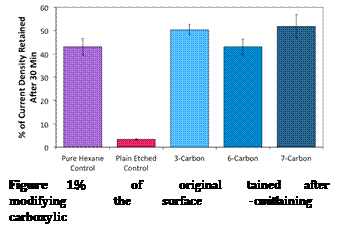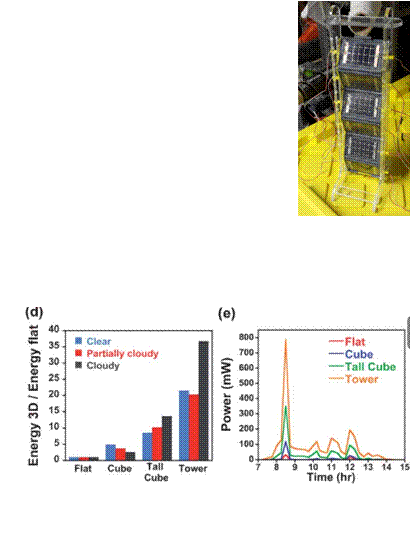Grantee Research Project Results
2014 Progress Report: Don't Eat Your Spinach: Nature Inspired Biohybrid Solar Cells
EPA Grant Number: SU835287Title: Don't Eat Your Spinach: Nature Inspired Biohybrid Solar Cells
Investigators: Jennings, G. Kane , Anilkumar, Amrutur V.
Institution: Vanderbilt University
EPA Project Officer: Hahn, Intaek
Phase: II
Project Period: August 15, 2012 through August 14, 2014 (Extended to August 14, 2015)
Project Period Covered by this Report: August 15, 2013 through August 14,2014
Project Amount: $88,992
RFA: P3 Awards: A National Student Design Competition for Sustainability Focusing on People, Prosperity and the Planet - Phase 2 (2012) Recipients Lists
Research Category: P3 Awards , P3 Challenge Area - Air Quality , P3 Challenge Area - Chemical Safety , Pollution Prevention/Sustainable Development , Sustainable and Healthy Communities
Objective:
The 4-member 2013-14 EPA P3 design team sought to achieve the following goals with a solar cell that incorporates a PSI film on highly p-doped silicon:
- Investigate the use of an environmentally friendly and affordable mediator.
- Deposit molecular films on the silicon surface to inhibit oxidation and improve cell stability.
- Examine vertical cell architectures to improve the cell surface area per geometric area.
Progress Summary:
Environmentally Friendly Mediator. The two chemical engineers on the team examined the performance of a natural, environmentally friendly mediator solution to replace our optimal mediator as determined in 2012-13, methyl viologen, which is a powerful herbicide. The mediator system they chose was 2,4-dichloroindophenol (DCIP) with sodium ascorbate, which the Jennings group has used effectively on PSI biohyrid cell designs on gold. In this system, DCIP serves as the electron acceptor to receive electrons from the FB site of Photosystem I, and sodium ascorbate is the electron donor, known for its antioxidant properties as Vitamin C. We found that the methyl viologen mediator exhibited 5-times greater photocurrents than the DCIP/ascorbate system, but the latter was more stable to achieve the same level of performance long after the light was turned on. Given the toxicity of the methyl viologen and its known performance from a year ago, we decided to use the natural mediator system, even with reduced initial performance.
2. 
Further, we determined that propiolic acid (3 carbons) performed as well as longer analogues and provided a shorter electron conduit into the protein (Figure 1). Propiolic acid-modified silicon provided over 10-times more stability than unfunctionalized silicon (see plain etched control), but notably, a pure hexane control performed nearly as well as the molecular films due to its ability to inhibit initial oxidation. Once PSI was deposited onto the molecular film, we observed that some electrodes were able to improve their photocurrents over a few days rather than experiencing a constant fall off. Nonetheless, the longer term stability of this system over a few weeks based on our cell testing is not comparable with that of a noble gold electrode from our Phase I work.
Figure 2. A picture of the vertical biohybrid cell design
Figure 3. Comparison of flat versus cube, tall cube, and vertical tower designs.
3. Examine Vertical Cell Architectures. The two mechanical engineers on the team investigated vertical cell architectures
inspired by the 3-‐dimensional profile of trees, rather than the Figure 2. A picture common flat design (Figure 2). As tested with commercial of the vertical silicon solar cells, the energy of the vertical tower design was biohybrid cell far greater than other alternatives we investigated, design. particularly on cloudy days versus the flat design (Figure 3). The team also examined east-‐west versus north-‐south facing designs. The east-‐west orientation dominated early and late in the day whereas the north-‐south orientation was superior at 2 midday. Integrating the data, the east-‐west orientation was more effective on the testing day.
Future Activities:
In 2014-‐15, we will work to improve the performance of these biohybrid systems by investigating crosslinking to improve PSI film stability and exploring new electrodes and polymer-‐protein composite films to boost both performance and stability in both wet and dry or solid-‐state arrangements. In particular, we are currently showing that crosslinking can provide a means to anchor proteins to each other, thereby minimizing desorption into an aqueous phase and possibly improving interprotein electron transfer via hard-‐wired linkages. We hypothesize that integrating the protein with conducting polymers, such as polythiophene, can also aid electron transfer between proteins and throughout the film. We will examine polythiophene as both an inexpensive and flexible electrode for PSI in addition to its molecular integration within a PSI film by a new surface-‐initiated polymerization from individual proteins. This overall work is designed to take a significant step toward solid-‐state biohybrid cells and negate some of the stability issues with PSI/silicon wet cells.
Journal Articles:
No journal articles submitted with this report: View all 4 publications for this projectSupplemental Keywords:
photosynthesis, photoelectrochemical, siliconProgress and Final Reports:
Original AbstractP3 Phase I:
Don’t Eat Your Spinach: Nature Inspired Biohybrid Solar Cells | Final ReportThe perspectives, information and conclusions conveyed in research project abstracts, progress reports, final reports, journal abstracts and journal publications convey the viewpoints of the principal investigator and may not represent the views and policies of ORD and EPA. Conclusions drawn by the principal investigators have not been reviewed by the Agency.

